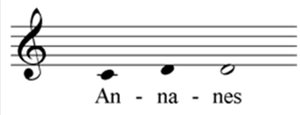Figure 20: The first sound of the Tetraphonia: Annanes, illustrated in stave notation.
____________________________________________
In this example, the d is the resultant sound of phoni, which contains the memory of the foundational sound, c, and of the traversed musical space (in this case a major second). Furthermore, Mechkova reconstructs the fundamental unit of the Byzantine modal system – the tetraphonia (τετραφωνία), in the form of, what I can best describe from the present perspective as: fifth-repeating modes. I will describe the particular application of fifth-repeating modes in my music, and some further psychoacoustic/psychological significance, in Chapter 6.1.
In the context of Three Songs..., the most important influence was the idea that even the most elemental unit, phoni, exhibits internal hierarchy and structure, a musical meaning of its own. Thus even a modal structure of 2 phonai, (which contains 3 pitches in total) could have (if structured in this way) a hierarchy that is internal to it, rather than coming ‘from the outside’, from presumed and predetermined functional, scalar and tonal hierarchies, as in tonal theory. Furthermore, a mode of 4 or 5 pitches could be also a complete mode, which could be further iterated cyclically as fourth-repeating and fifth-repeating modes, just as the octave-repeating modes are (further discussion in Chapter 6.1).
The influence of this fascinating economy of the medieval Byzantine system could be seen in my works from this song cycle onwards, in the form of a greater economy in the span of the modal networks (and sometimes of their cycles), as well as a particular kind of internal structuring of the modal centre and hierarchy, differing from that in The Mirror. The best way to describe that is by comparing the approach to the modal centre in Three Songs... and The Mirror.


